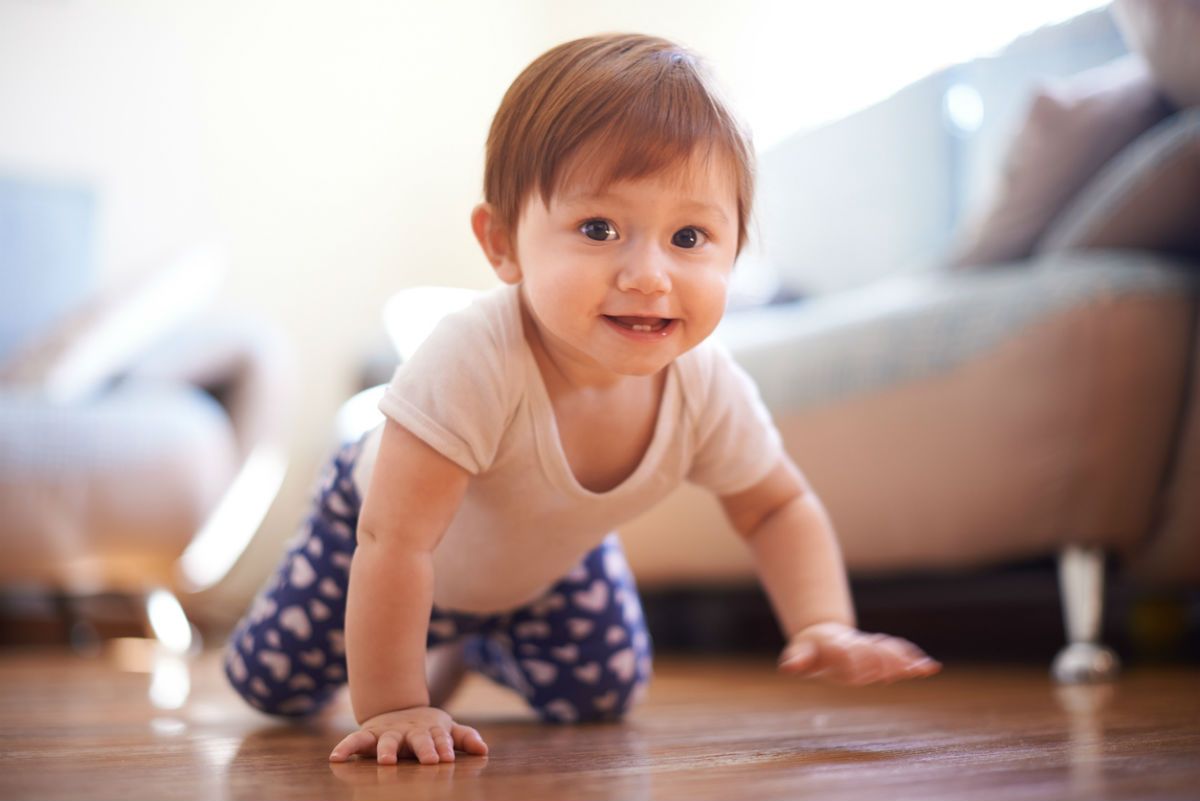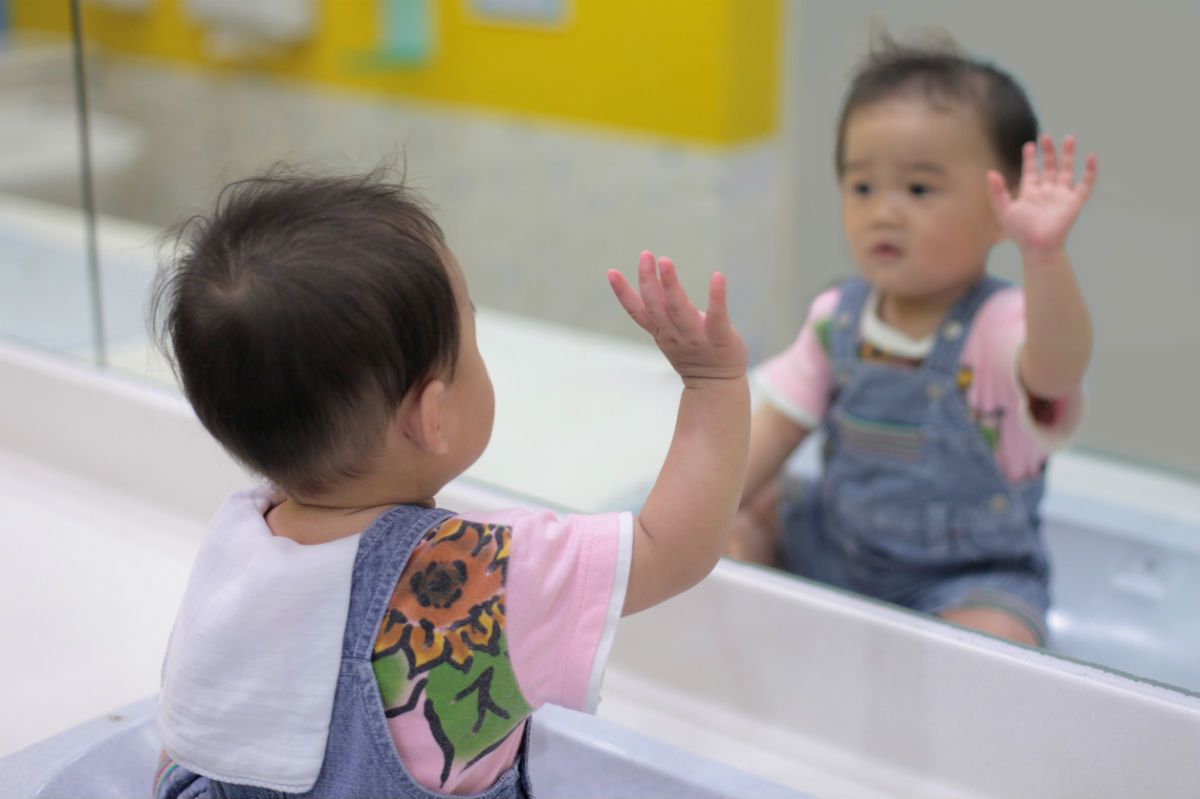Baby in the House! 5 Easy Ways to Set Up Baby's Environment for Ultimate Learning Power

By Cheryl Flanders
Crab crawls. Bear crawls. Bottom scoots. Speed demons.
Every baby has his own way of getting from point A to point B en route to taking his first “real” steps. Watching babies start to go-go-go is awe-inspiring, “aww”-inducing, and a sign of a new era of mobility: He’s moving a little faster, reaching a little further, and pushing his boundaries a little more every day.
That means he’s also becoming more and more curious about his surroundings—and that curiosity is pushing him to start trying to move around so he can explore all those intriguing knobs, baubles, and shelves in his environment (including that perennial baby favorite, those noisy and oh-so-fun spring-wire door stoppers).
That means that, if you haven’t already, it’s time to beef up on your home safety precautions. But rather than seeing everything as a potential hazard, there’s also this to consider: With a little rearranging (and seeing the world through your baby’s eyes), you can create a home environment that actually aids his development!
Everyone Belongs In Our Circle
At KinderCare, we’re committed to building warm, welcoming and supportive classrooms for children of all abilities, backgrounds and experiences.
Find a center near youHere are five tips for creating a safe and brain-boosting physical space for your budding mover and shaker:
1. Designate an Exploration Space
All the rooms in your house should be baby-safe, but try setting up one room to always be ready for infant adventures (think covered sockets, non-hazardous items on low shelves, few furniture items). This will save you prep time, and give her the freedom to crawl, scoot, roll, pull up, and climb without you having to guide her movements. There’s tons of benefits to this, too: Her curiosity kicks in, she makes connections in her brain about the world around her, and she begins to build her fine- and gross-motor skills.
Whether large or small, any baby-proofed area will do the trick—just make sure the floor surface is carpeted or padded so her first efforts at crawling (or scooting) are comfortable. Once you’ve got the area ready for her, let her do her thing and watch as she delights in her free-spirited efforts to own the space!
2. Put Favorite Toys and Lovies within Easy Reach
When your baby is able to reach for favorite toys, books, or stuffed animals all by himself, he’s getting his first taste of independence, and that’s a good thing. Not only that, but by reaching for what he wants, he’s practicing his spatial awareness skills (knowing where his body is in relation to the space he’s in). You can encourage him to explore and honor his own choices by storing play items on low shelves or close to the ground, where his curious mind-in-the-making can get them (and play with them) on his own. Safety note: Tall shelves should be bolted securely to the wall.

3. Hang up a Mirror (and Some Family Photos, Too)
At around seven months old, your baby is able to recognize her own name, but even before that, she’s already developing a sense of who she is—and who the members of her family are. To support her emerging sense of identity, set up some plastic safety mirrors at baby-eye level so your little crawler can admire herself. Another great way to boost her self-identity and keep family faces in her mind is to post real family photos (including pet pics!) in low places where she can see them.
4. Add Some Toddler-Size Furniture
You can bet that he’s excited to be moving around on his own…but think of it from his perspective. Regular furniture is gigantic compared to your crawling tot, and not being able to, say, hoist himself into your enormous easy chair crimps his burgeoning independence by making him dependent on your help. Make his play space just the right size by bringing in some child-size chairs and tables—not only will it benefit his physical development, but his self-confidence and independence will be boosted, too.
A Lifetime Of Confidence Starts Here
Our teachers help every child build the confidence they need to try new things and explore the world around them.
Search for a center near you5. Take It Outside—or Bring the Outside In
Take the party outside and introduce your baby to the world beyond your house for some totally new discoveries. Nature has endless experiences that your house just can’t offer. Playing in the mud, watching a butterfly flutter by, grabbing a dandelion puff—all these new sensations are great brain builders because babies learn predominantly through their senses! So head to the yard, take a walk, or laze in the park for a while. That’s relaxing for you and a major brain workout for your beautiful baby! Rainy days in the forecast? Gather some leaves, twigs, or flowers from nature beforehand and bring them inside for (supervised) sensory play!





